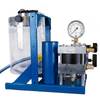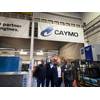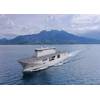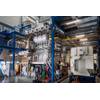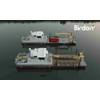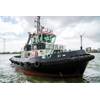NAVSEA Increases Wasp-class Fuel Efficiency
The U.S. Navy began installing combustion trim loop systems this month on amphibious ships to improve fuel efficiency and save up to 2,400 barrels of fuel per ship annually.
The Naval Sea Systems Command (NAVSEA) tested system, coupled with a new stack gas analyzer, automatically optimizes the fuel-air mixture for the ships' two boilers, making them more efficient. The trim loop system also protects the environment and increases crew safety by automatically preventing black or white smoke conditions. This initiative, part of NAVSEA's Fleet Readiness Research & Development Program (FRR&DP), supports the secretary of the Navy's efforts to reduce total energy consumption on naval ships.
"[The combustion trim loop] cuts down on fuel consumption because it provides optimum air flow going to the boiler, giving you a better fuel-air mixture and making the boiler more efficient," said Master Chief Petty Officer Robert Hook, NAVSEA steam generating plant inspector and community manager.
"A 2.1 percent [overall fuel] savings is significant, said Doyle Kitchin, director of NAVSEA's Fleet Readiness Engineering Office, the fuel savings is driving the return on investment, making this one of our 'quick wins' and creating a more efficient operation."
USS Bonhomme Richard (LHD 6) and USS Blue Ridge (LCC 1) are currently having the system installed, following system validation onboard USS Peleliu (LHA 5), which completed in July. LHD 1 through 7 will receive the new system by the end of fiscal year 2016.
"FRR&DP examines new technologies that offer reduced fuel consumption and significant return-on-investment but must be tested and validated before fleet-wide implementation. "In these days of lean budgets and volatile fuel prices, we have to identify programs capable of delivering maximum return-on-investment," said Petter Kristiansen, NAVSEA FRR&DP program manager.
Other energy-saving FRR&DP initiatives under testing and evaluation include on-line water wash for gas turbines, underwater hull advanced foul release coatings, solid-state lighting, and stern flaps.
Established in October 2007, FRR&DP operates under NAVSEA's Washington, D.C.-based Fleet Readiness Engineering Office and focuses on reducing shipboard energy consumption by identifying and evaluating fuel-saving technologies for fleet implementation.


